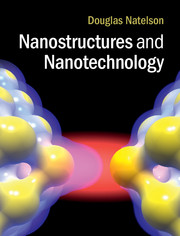Book contents
- Frontmatter
- Contents
- Preface
- Part I
- 1 Introduction and overview
- 2 Solid state physics in a nutshell
- 3 Bulk materials
- 4 Fabrication and characterization at the nanoscale
- 5 Real solids: defects, interactions, confinement
- Part II
- Appendix Common quantum mechanics and statistical mechanics results
- References
- Index
2 - Solid state physics in a nutshell
from Part I
Published online by Cambridge University Press: 05 July 2015
- Frontmatter
- Contents
- Preface
- Part I
- 1 Introduction and overview
- 2 Solid state physics in a nutshell
- 3 Bulk materials
- 4 Fabrication and characterization at the nanoscale
- 5 Real solids: defects, interactions, confinement
- Part II
- Appendix Common quantum mechanics and statistical mechanics results
- References
- Index
Summary
Solid state physics, or condensed matter as it is now more commonly known, is the underpinning of the vast majority of modern technology. This (long) chapter will examine key elements of the solid state physics of bulk systems. Understanding the origins of the properties of macro scale materials leads to insights about why nanoscale materials are different. This is not intended to be a complete treatment of modern solid state physics – that would take hundreds of pages alone! At the end of the chapter I list a few of the many excellent books on this vast subject for those interested in learning more.
As shall become clear, the quantum mechanical character of electrons is essential to understanding matter in the solid state, even though the more exotic quantum effects evade everyday experience. However, describing realistic solids is, in principle, incredibly complicated. Restricting the discussion to relatively low energy scales, in a cubic centimeter of copper are ∼ 1023 nuclei, surrounded by ∼ 1024 electrons. Exactly solving the detailed quantum many-body problem for this system is clearly a practical impossibility. This makes the case for the other key component of approaches to understanding the solid state: statistical physics. Solving classical equations of motion for every gas molecule in your room is just as impractical as the solid state problem. Fortunately, statistical mechanics has been developed, allowing us to consider distributions of particle velocities. Similar approaches are routinely applied in the solid state, along with related concepts like a density of states.
Note that all of the electrons and nuclei are electrically charged and therefore interact with one another. These interactions are not necessarily weak! Strongly interacting many-body problems are exceedingly hard to solve, but the observation that atoms remain a useful way of thinking about solid materials hints at a way out of this dilemma.
- Type
- Chapter
- Information
- Nanostructures and Nanotechnology , pp. 15 - 65Publisher: Cambridge University PressPrint publication year: 2015

